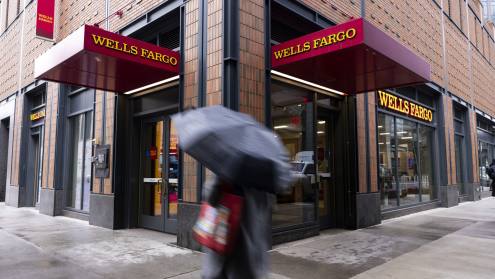At a glance
- The global securities finance industry generated $10.7bn for lenders in 2023, yet again surpassing revenues from previous years
- Factors behind the rise in the demand for securities include directional trading, internalisation needed by broker-dealers for their own books, and corporate activity
- Market volatility has created more opportunities for some lenders, but not all have benefited significantly from higher lending fees
Despite years of challenges for international markets, the global securities finance industry has registered a year of record-breaking growth, generating $10.7bn for lenders in 2023, according to according to DataLend, a market data provider, part of securities lending platform EquiLend.
The figure, which represents the highest revenue amount registered by the firm since it began recording the data a decade ago, marks an 8.6% increase from 2022 and 16% from 2021.
According to DataLend, the growth in lender-to-broker revenue in the 2022 results was mainly caused by a surge in borrower demand for equities in North America and the Asia-Pacific region, which saw an increase in revenues of $492m and $228m, respectively.
Additionally, fees to borrow North American equities increased by 9.6%, while the on-loan value for Asian equities increased by 11.3%, bringing global equity lending revenues up by 8.2% over 2022. Meanwhile, equity lending revenues in Europe, the Middle East and Africa fell by 8.1%.
Broker-to-broker activities, encompassing transactions where broker-dealers lend and borrow securities from one another, additionally contributed $2.86bn in revenues, marking a 4.4% increase from 2022.
Demand drivers
Nancy Allen, head of data and analytics at EquiLend, says that some of the key drivers of demand in the global securities finance industry include “directional trading, internalisation by broker-dealers, financing and corporate activity”.
“Looking at the $10.7bn in revenues, that is a modern record that was primarily driven by what we call ‘specials’,” says Ms Allen. These are securities in high demand that require large fees to borrow, and have experienced a growth in popularity with lenders over the past few years. This is partially thanks to their highly lucrative potential for lenders and a rise in demand caused by a handful of US players, which helped push fees and revenues even higher.
Corporate bonds have also been key drivers in 2023, primarily thanks to interest rate hikes that occurred throughout the year, says Ms Allen. The top five earning securities were all North American equities and generated $1.1bn, which is a substantial increase from the $769m generated by the top five earners in 2022.
“It really was North American equities that drove the increase in revenue, mainly thanks to specials, or hard-to-borrow securities,” says Ms Allen. “In 2022, the average fee across the top 10 US equities borrowed was about 1200 basis points, while in 2023, the average fee to borrow across the top 10 increased to more than 3000 basis points,” she adds.
Market volatility
A number of firms within the lending community have experienced bumper revenues in recent years. This has been driven by high market volatility generated by new geopolitical risks, including the current conflict in the Middle East and the ongoing Russian invasion of Ukraine, which have given rise to new arbitrage opportunities and pricing discrepancies.
“In these unpredictable circumstances, end users like hedge funds and an increasing number of mutual funds start to identify these opportunities and try to take advantage of some of those differences in the market, generating more lending activities,” says Matt Chessum, director of securities finance at S&P Global.
Read more
“We recently saw some big initial public offerings in the US, which have helped push up the lending fees for stocks, as they typically have lock-up periods and lower volumes provide opportunities for lenders to provide liquidity, which is what securities lending is ultimately all about.”
However, Mr Chessum says that not all lenders have equally benefited from the trend. “Not everybody who has been lending their securities has benefited to the same degree, because there has been a high concentration of specials, which are securities that are not held by all lenders,” he says.
Regarding the effect that the revenue generated is having on the banking sector, securities lending is a relatively small but important part of financial markets, so the impact of these banner revenues on the banking sector remains modest.
The largest revenues would be seen across those asset owners who held the right securities, and the agent lenders who were lending the assets on their behalf. Certain hedge funds engaging in specific strategies that use these borrowed shares would have also benefited, according to Mr Chessum.
“What is interesting is that securities lending revenues in general, per fund or per pension fund, remain incremental to overall investment returns,” says Mr Chessum. “However, what you have to take into account is that these additional basis points that are added to an investment vehicle get compounded continuously over an extended period of time, which can generate a lot of returns for a pension fund holder over the life of their investment.”
While Mr Chessum foresees a certain degree of uncertainty in the first half of 2024 due to a potential lack of conviction from hedge funds as to how they want to proceed within the current interest rate environment, he expects that the tide will turn in the second half of the year.







